#Severe Acute Respiratory Syndrome
Text
SARS on the rise in Brazil, Fiocruz data shows

Brazilian health authorities have reported an increase in the number of cases of Severe Acute Respiratory Syndromes (SARS) in 22 states and the Federal District, where three out of every four detections were of COVID-19.
According to the Infogripe Bulletin, from the Oswaldo Cruz Foundation (Fiocruz), an upward trend was detected in 23 units of the federation.
The study released Thursday updates the national scenario, with data for the week of November 27 to December 3. The growth of SARS is predominant in the adult population and especially among those over 60 years of age.
Continue reading.
#brazil#politics#brazilian politics#coronavirus#covid 19#severe acute respiratory syndrome#mod nise da silveira#image description in alt
6 notes
·
View notes
Text
Study suggests lingering coronavirus in tissues may contribute to long COVID symptoms
In a recent study published in The Lancet Infectious Diseases, researchers evaluate the persistence of the severe acute respiratory syndrome coronavirus 2 (SARS-CoV-2) in tissues and its association with long coronavirus disease 2019 (COVID-19) symptoms.
Study: The persistence of SARS-CoV-2 in tissues and its association with long COVID symptoms: a cross-sectional cohort study in China. Image…

View On WordPress
#ACE2#blood#blood vessel#Coronavirus#Coronavirus disease COVID-19#COVID-19#diarrhea#Dyspnea#fatigue#Gastroscopy#genes#headache#Hybridization#Immunohistochemistry#Infectious Diseases#pain#Polymerase#Polymerase chain reaction#protein#Respiratory#RNA#sars#SARS-CoV-2#Severe Acute Respiratory#Severe Acute Respiratory Syndrome#Syndrome#Transcription#tumor
0 notes
Photo

(via Rs Juwita)
#rapunzel corona#corona news#corona#virus corona#pilek#saluran pernapasan#sars-cov-2#severe acute respiratory syndrome#mers-cov#Middle-east respiratory syndrom#lockdown#zoonosis#world health organization (who)#pandemik#demam tinggi#batuk kering#sesak napas#tenggorokan#hidung tersumbat
0 notes
Photo


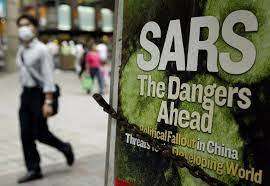
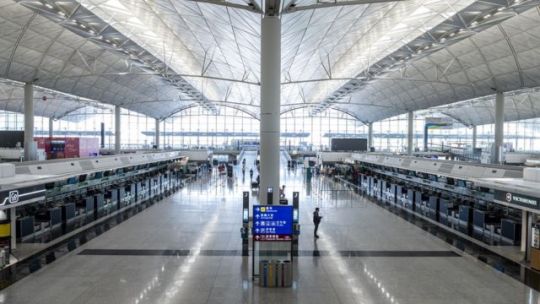

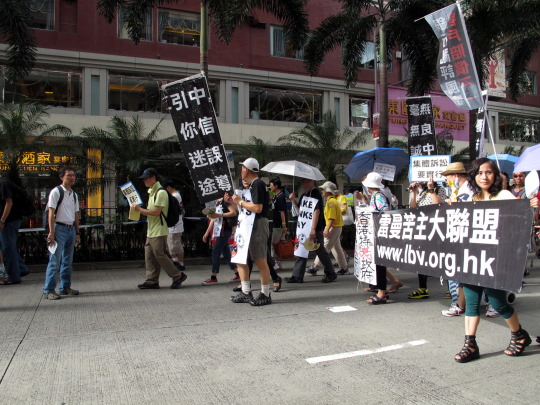
Rebound For Life Is What Happens When Other People Are Busy Crying And You Are Busy Making New Plans After A Catastrophe—Historical Devastations Which Have Almost Killed Hong Kong Since 1950s
Pete Seeger composed “Turn! Turn! Turn!” in 1959. He wrote
a time to be born, and a time to die
a time to plant, a time to reap
a time to kill, a time to heal
a time to laugh, a time to weep
to everything (turn, turn, turn) there is a season (turn, turn, turn) and a time to every purpose, under heaven……
The vast devastations, political, economic and health hazards, in the history of Hong Kong did not destroy but raised us to greater heights of ability to survive. We can trace our proud ancestry through these past struggles. In fact, the devastations have made Hong Kong very different from other places in Asia and so a uniquely charming city gone down in history.
In our old days, there were 3 incidents of violent rivalry between the establishment vs the people. In 1967, street protests and fights occurred under the influence and in the backdrop of the Cultural Revolution taking place in China. There were people who were either shot down dead or killed by bombs. My mother forced us to stay at home at all times. Schools were closed. Tear gas was often deployed in riotous scenes near our house in Wan Chai and we always kept windows shut.
I was told that back in 1956, the pro-Taiwan and pro-Chinese Mainland political supporters fought fiercely in Sham Shui Po. Soon, Hong Kong was convulsed by deadly violence. The city became in chaos.
As we can remember not long ago, street conflicts in 2019 were stirred over the ‘Rendition Bill’ legislation dealing with fugitives. Thousands were arrested, inevitably many were injured and some unfortunately died. By mid-2020, the serious commotion led Hong Kong government to declare the restoration of peace and stability with the imposition of the National Security law.
Sometimes, it takes a social or natural disaster to reveal the highest human qualities such as hope, love and endurance. No tragic disaster can destroy the treasures of our heart. Despite all these hardships, people in Hong Kong managed to live, continue and exist. To believe in future can help us overcome all the above unbearable situations because we try to envision a better tomorrow at the end of the dark tunnel.
It is recorded that Hong Kong has been hit by death-dealing health plagues for nearly 25 times since 1843. The heart-breaking ones are never forgotten. In 1914, 1,300 people were killed by the Black Death epidemic. In 1937, 1,000 victims died of cholera. In 1970, 1,500 lives were taken away by tuberculosis. In 2003, we lost almost 300 patients due to severe acute respiratory syndrome (SARS). At present, the death toll caused by COVID-19 has been more than 10,000 and the figure is still rising…Mamma Mia, we still cannot get rid of the Omicron nightmare in Hong Kong right now!
The writer Gene Wolfe humorously put, “You think whatever is wrong with you is contagious? Yes, but you had it already. You caught it from your mother. Death!” We are the humble beings that have to die when it is time for us to die. We can do very little but just try hard to survive.
No one should ever ever have a good reason for suicide. It is especially not sensible for some in economic crisis to end their life. ‘Bankruptcy’ in Hong Kong is a legal solution which can be adopted by a person who is unable to repay outstanding debts. His debts will be written off after 4 years of bankruptcy.
Tragedy is timeless. The overarching theme for an economic crisis is always that many will become poor but a few will painstakingly find ways to become rich; and on that note, Hong Kong has transitioned from a number of well-known economic catastrophes: 1973 Stock Market Crash (caused by oil crisis), 1981 Economic Slump (Sino-British’s talk over the political future of Hong Kong failed), 1987 ‘Black Monday’, 1997 Asian Financial Crisis and 2008 World Economic Recession. Hong Kong took great pride in having been able to overcome these economic downturns and seek the opportunities to reform as a result of all these lessons. The governing fundamentals in our city are still strong but we have to watch out the future balance of power management—Hong Kong does have to be a very international city if it wants to maintain its status as the economic centre in Asia.
We can never tell what goes on in between Hong Kong is and what it will become. The uncertainty of destiny of a city is always a blue and scary section of hell. No one is able to give us the map which can put Hong Kong continuously on the map. Rebound for life is what happens when other people are busy crying and you are busy making new plans after the COVID holocaust! This is why I am now busy packing my bags for my 1st trip to Thailand since 2020! Oh my gosh, 3 years have passed!
Devastation never ends, and hope never melts too.
MLee
Chinese Version 中文版: https://www.patreon.com/posts/lan-de-xi-xu-xin-76194473?utm_medium=clipboard_copy&utm_source=copyLink&utm_campaign=postshare_creator&utm_content=join_link
Song – “Turn! Turn! Turn!” https://youtu.be/snZKnES4ng4 Acknowledgement – Classic Hits
Song – “The Windmills of Your Mind” https://youtu.be/WEhS9Y9HYjU Acknowledgement - Noel Harrisonfan
Tips on Hong Kong Airport Arrival in 2022 https://youtu.be/rol6Fsu8z-c Acknowledgement-The Walk Street Channel
Popular places in Bangkok https://youtu.be/FaVIuwTpxIo Acknowledgement-KKday Taiwan
#Pete Seeger#Gene Wolfe#COVID-19#Omicron#Cholera#Bankruptcy#Black Death#Tuberculosis#Oil Crisis#Turn! Turn! Turn!#National Security Law#Economic Slump#Asian Financial Crisis#World Economic Recession#Severe Acute Respiratory Syndrome
0 notes
Text
Vagus nerve stimulation for long COVID
Vagus nerve stimulation for long COVID
In a recent study posted to the Research Square* preprint server, researchers assessed the effectiveness of transcutaneous auricular vagus nerve stimulation (taVNS) in managing long coronavirus disease 2019 (COVID-19).
Study: A pilot randomized controlled trial of supervised, at-home, self-administered transcutaneous auricular vagus nerve stimulation (taVNS) to manage long COVID symptoms. Image…
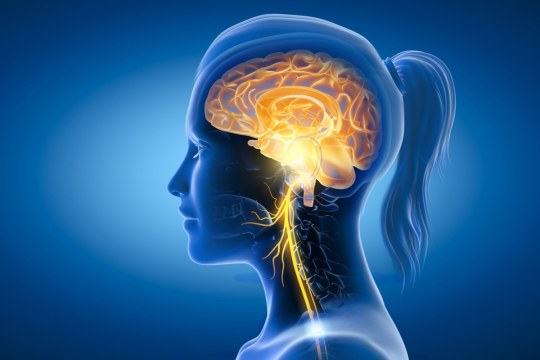
View On WordPress
#Coronavirus#Coronavirus Disease COVID-19#Covid#covid 19#heart#Heart Rate#Long#nerve#research#Respiratory#SARS#SARS-CoV-2#Severe Acute Respiratory#Severe Acute Respiratory Syndrome#Skin#stimulation#syndrome#Vagus
0 notes
Text
wow Dream maybe you wouldn't get sick as often if you WORE A RESPIRATORY MASK IN PUBLIC AND TRANSIT
#dreamwastaken#mm.txt#/neg#again technically ifg#caps lock#like my dude. my buddy. my guy.#covid is not over#you are actively endangering yourself and everyone around you.#like did we all collectively forget that the sars part of sars cov 2 stands for **SEVERE** ACUTE RESPIRATORY SYNDROME#I love our silly mimecraft guys ofc but they are not immune to criticism OR to covid
1 note
·
View note
Text


Just your regular reminder to those of you (that’s most of you) not masking because you’re “not high risk” and “don’t have a preexisting condition” that a covid infection is a preexisting condition and you are now high risk.
[ID: Tweet from LizWhatsHerFace @RealGayArbys “Look at this graph. If you're on infection number two or three, your risk of being hospitalized if you get Covid again is VERY heightened. And your risk of a lot of other bad stuff happening is higher too. You need to act accordingly. You likely don't know what number you're on.” Graph showing the impact of reinfections from Covid on hazard ratio from various conditions, US Veterans affairs population. Data comes from a 2022 study published in Nature titled "Acute and postacute sequelae associated with SARS-CoV-2 reinfection." As the study abstract states, the data shows that "First infection with severe acute respiratory syndrome coronavirus 2 (SARS-CoV-2) is associated with increased risk of acute and postacute death and sequelae in various organ systems."]
#not caring about immunocompromised people has made you immunocompromised#funny how that works#karma is a bitch#wear a fucking mask#covid 19#wear a mask
3K notes
·
View notes
Text
It's still not just a cold.
"This study showing that severe acute respiratory syndrome coronavirus directly infects coronary artery plaques, producing inflammatory substances, really joins the dots and helps our understanding on why we're seeing so much heart disease in COVID patients," Peter Hotez, MD, professor of molecular virology and microbiology at Baylor College of Medicine in Houston, told Medscape.
Oh, also?
CDC predicts respiratory disease season will be similar to last year
"The CDC said it expects a similar number of respiratory disease cases this year as last year, with 15 to 25 new weekly hospitalizations per 100,000 people."
"As of Friday, nearly 12 million people have gotten the new Covid-19 vaccine since they were authorized last month, according to HHS. That’s millions more than the week prior, but still less than 4% of the US population."
No one is protecting themselves. And no one else will protect you.
Even if you're not worried for yourself....don't be one of the people that carries it to someone else. We're all responsible for the most vulnerable people in our society. (That could be you, by the way.....)
WEAR. YOUR. MASK.
2K notes
·
View notes
Text
Unlike Delta variant, Omicron less likely to cause long Covid: Lancet study

The Omicron variant of the SARS-CoV-2 virus is less likely to cause long COVID than the Delta strain, according to a study published in The Lancet journal.
Long COVID is defined as having new or ongoing symptoms four weeks or more after the start of the disease, the researchers said.
Symptoms include fatigue, shortness of breath, loss of concentration, and joint pain, which can adversely affect day-to-day activities, and in some cases can be severely limiting, they said.
The researchers found that the odds of experiencing long COVID were between 20-50 per cent less during the Omicron period versus the Delta period, depending on age and time since vaccination.
"The Omicron variant appears substantially less likely to cause Long-COVID than previous variants but still 1 in 23 people who catch COVID-19 go on to have symptoms for more than four weeks," said study lead author Claire Steves from King's College London, UK.
The study identified 56,003 UK adult cases first testing positive between December 20, 2021, and March 9, 2022, when Omicron was the dominant strain.
Researchers compared these cases to 41,361 cases first testing positive between June 1, 2021, and November 27, 2021, when the Delta variant was dominant.
Read more
#Coronaviruses#Sarbecovirus#Medical specialties#Infectious diseases#Zoonoses#COVID-19 pandemic in India#COVID-19 pandemic in South Africa#Severe acute respiratory syndrome coronavirus 2#SARS-CoV-2 Delta variant#SARS-CoV-2 Omicron
0 notes
Text

https://onlinelibrary.wiley.com/doi/10.1002/brx2.58
Published April 16, 2024
Abstract
Caused by severe acute respiratory syndrome coronavirus 2 (SARS-CoV-2), coronavirus disease 2019 (COVID-19) primarily manifests as respiratory dysfunction. However, emerging evidence suggests SARS-CoV-2 can invade the brain, leading to cognitive impairment (CI). It may spread to other brain regions through transsynaptic neurons, including the olfactory, optic, and vagus nerves. Moreover, it may invade the central nervous system through blood transmission or the lymphatic system. This review summarizes the neuroimaging evidence from clinical and imaging studies of COVID-19-associated CIs, including magnetic resonance imaging and 18F-fluorodeoxyglucose positron emission tomography-computed tomography. The mechanisms underlying COVID-19-associated CIs are currently being actively investigated. They include nonimmune effects, such as viral proteins, tissue hypoxia, hypercoagulability, and pathological changes in neuronal cells, and immune effects, such as microglia and astrocyte activation, peripheral immune cell infiltration, blood-brain barrier impairment, cytokine network dysregulation, and intestinal microbiota. Inflammation is the central feature. Both central and systemic inflammation may cause acute and persistent neurological changes, and existing evidence indicates that inflammation underlies the elevated risk of Alzheimer's disease. Finally, potential therapeutic options for COVID-19-associated CIs are discussed. In-depth research into the pathological mechanisms is still needed to help develop new therapies.
#mask up#covid#covid 19#covid isn't over#pandemic#covid conscious#long covid#covid is airborne#wear a mask#coronavirus
57 notes
·
View notes
Text
Annual COVID-19 vaccine proves to be a wise investment for personal health and pocketbook
In a recent study published in The Journal of Infectious Diseases, a team of researchers from the United States (U.S.) attempted to understand whether individuals experienced any economic benefits in getting an annual coronavirus disease 2019 (COVID-19) vaccine, given that the morbidity and mortality rates associated with the disease have decreased and the government no longer covers the vaccine…

View On WordPress
#Coronavirus#Coronavirus disease COVID-19#Efficacy#health insurance#Infectious Diseases#mortality#Respiratory#sars#SARS-CoV-2#Severe Acute Respiratory#Severe Acute Respiratory Syndrome#Syndrome#Vaccine#Virus
0 notes
Text

smokin fat blunts helps keep u safe from covid godbless
135 notes
·
View notes
Text
The articles about how Covid affects our brains are coming out every week it seems. I have hope our brains can recover, however getting COVID numerous times is not a good idea.

43 notes
·
View notes
Text

Just a few days before our interview, Jill’s (Ed: not her real name) immunologist sent her to the hospital to rule out pulmonary embolism, which happens when a blood clot gets stuck in an artery of the lung. In Jill’s case it would be a Long COVID symptom amongst many others she had been battling over the last year: including swelling around the tissue of her heart, memory deficits, sudden heart-rate surges, fatigue and abnormal kidney test results.
By that point, she’d had COVID four times, despite taking stringent precautions. She was born with a primary immune deficiency. And, without a fully functioning immune system she needs weekly injections of human immunoglobulins from plasma donations. A very small viral load can make her sick and she’s at a much higher risk of severe outcomes from COVID than most people.
“Every time I catch it, it adds new layers to my disabilities,” she says. “COVID is slowly killing me.” Her haematologist believes the past COVID infections have further damaged her immune system. She is looking at a possible lupus diagnosis.
Her voice is raspy and soft over the phone. She pauses when I ask how she is doing.
“Well, I got COVID,” she says. “Again.”
At the hospital appointment several nurses were not wearing their masks properly, and one kept pulling it down to talk with Jill, who had to remove hers to get her lungs checked. As someone who is very isolated with her family — everyone works and goes to school from home — Jill believes that the appointment led to her most recent infection.
She’s always been careful with her health but in the past, she worked in the school system. By 2020 she moved to a remote position and at that time still had many options for safely connecting with those around her and she could attend health-care appointments without concern. About a year ago, nearly all restrictions were lifted in Alberta and that’s when she got her first COVID infection.
Three years in, nearly everyone she knows has moved on including — most bafflingly to her — many of the medical professionals she sees. But, Jill says, moving on is not a privilege afforded to people like her.
Recently, PCR testing became inaccessible to health-care providers, who, in the past, were able to test regularly. And while Alberta Health Services (AHS) still requires masks, any health-care settings outside AHS can make their own rules. So, once masking was no longer mandated in public settings, many dropped requirements — this includes many of the specialists seeing immunocompromised people, including those Jill now sees due to Long COVID.
“The variants have been left to run rampant and I have really become more and more scared,” she says.
“Governments are saying: Oh we can re-open because we have all these tools. But they are not available to the immunocompromised population. So, the monoclonal antibodies are no longer effective against the current variants. Because the variants are so immune-based, the vaccines were never particularly effective for immunocompromised people because of the nature of our immune systems.”
As well, Jill says that there are many contraindicated drugs that cannot be taken with Paxlovid, the drug which is used to treat COVID patients in specific circumstances. According to Health Canada, Paxlovid “is used in adults to treat mild to moderate coronavirus disease 2019 (COVID-19) in patients who have a positive result from a severe acute respiratory syndrome Coronavirus 2 viral test and who have a high risk of getting severe COVID-19, including hospitalization or death.”
She still takes the vaccines with hopes they will help, and while she believes Paxlovid is saving her life with this current infection, she says it is not a guarantee against more Long COVID symptoms. And, for the infection prior to the current one, the drug was not available due to a kidney infection caused by the virus.
“I have to access my medication, my health care. And by people not masking around me, I have no way to protect myself,” she says. “If you don’t want to wear masks as a society then you are going to leave the immunocompromised people behind.” And she says many high risk people are not able to work from home, or have their kids in online classes or maybe struggle to afford masks or air purifiers — many social and financial issues make individual protections far more challenging or impossible. She is currently in a court battle with her ex.
“He wants increased access, in-person school and group extracurricular activities. All things that put me at higher risk of infection,” says Jill.
Recently, she went to her cardiologist to find that no patients or staff were masking.
“I really realize now I have to be my own advocate,” she says.
She has to constantly think ahead. So, she now calls beforehand to see if the appointment can be done remotely or if the staff can mask. She’s also decided to start carrying around a laminated sheet that explains her medical condition as it is often something she needs to repeat at each appointment or in the emergency room.
Like many others, she’s found ways to navigate her way around a harrowing array of risks. And yet, even with all these precautions, she can not control the actions of others which can directly affect her health.
Holly (Ed: not her real name), is retired and lives in a small community just outside Edmonton. She’s currently thinking about her next visit to her doctor, who hasn’t been taking precautions from the beginning.
“It’s exhausting always trying to get around how there is no protection for us anymore,” she says. “I’m thinking why am I made to feel crazy when my own doctor won’t wear a mask? Won’t acknowledge that it’s airborne?”
But the worst part, she claims, was that he minimized the effects of COVID, saying it was rarely an issue and only affects a certain demographic. Holly does not believe that is true, but regardless it is of little comfort when her husband, who’s in his 70s, has chronic health complications.
“I think patients are rightfully concerned, particularly when they go in for health care,” says physician Neeja Bakshi. “I think the medical community should be doing whatever we can to protect those who are coming in.”
It’s true, she says, that hospitals are no longer overwhelmed, and fewer people are dying; there is less of an acute emergency. But COVID is still circulating, people are still dying, and Long COVID (aka post COVID-19 condition) should be on everyone’s radar.
Recently, the World Health Organization announced an end to the global health emergency. But it also said earlier that “one in 10 infections result in post COVID-19 condition suggesting that hundreds of millions of people will need longer term care.”
COVID can cause organ damage — particularly affecting the heart, kidneys, skin. Plus, there’s risk of brain and immune damage, along with increased risks for cancer and autoimmune disease.
And, while no one knows yet how long that damage could persist, a study published in the Journal of the Royal Society of Medicine says 59 per cent of Long COVID patients had organ damage a year later.
In 2022, Bakshi started a Long COVID clinic at her health facility Park Integrative Health, treating patients from across Canada. Every week she completes upwards of 20 disability forms for people who need to take time off work due to the debilitating effects of Long COVID.
While certain health complications make Long COVID more likely, anyone can be affected regardless of the severity of their infection or the state of their health. The indiscriminate nature of COVID is one of the things that’s been most shocking to Bakshi. She’s treated a number of elite athletes who went from performing at a professional level to struggling to have enough energy to brush their teeth.
Many patients struggle with stigma not just from medical professionals but from family, friends and employers. It’s an invisible illness, says Bakshi, so patients may look fine and are often misdiagnosed as something psychosomatic.
“I’m immersed in the world. But I don’t feel like you can deny it exists. And I think it’s a bit of ignorance on the medical community’s part if they say they don’t know anything about Long COVID. There are very specific disease patterns and symptoms,” says Bakshi.
There is also a lack of support. The most proven management strategy for Long COVID or even any COVID infection is recovery and rest, says Bakshi. But that’s not possible for many people. Initially, in 2020, there was forced rest through quarantine periods, but that time off has become shorter, as employers don’t have to pay for employees to be off at all.
“We are not a society that is built on support. We’ve already set ourselves up to fail from a recovery perspective,” says Bakshi.
Jill has found validation in Bakshi’s clinic as one of her patients. But that experience stands out amongst a sea of specialists who have given up on precautions.
“Instead of recommending upgraded masks, air cleaners and UV, or working from home, immunologists that manage my condition recommend wearing a mask if you want and enjoying your life—as short as that may be. I am not sure if this is complacency, or giving up… Either way, education and change need to happen or far too many valuable lives will be lost and disabled unnecessarily,” says Jill.
Savvy AF. Blunt AF. Edmonton AF.
243 notes
·
View notes
Text
Only 20% of Americans have effective protection against Omicron infection
Only 20% of Americans have effective protection against Omicron infection
In a recent research paper published as an accepted manuscript in the Clinical Infectious Diseases journal, scientists analyzed the population immunity against pre-Omicron and Omicron severe acute respiratory syndrome coronavirus 2 (SARS‑CoV‑2) variants in U.S. counties and states up until December 1, 2021.
Study: Population immunity to pre-Omicron and Omicron SARS-CoV-2 variants in US states and…
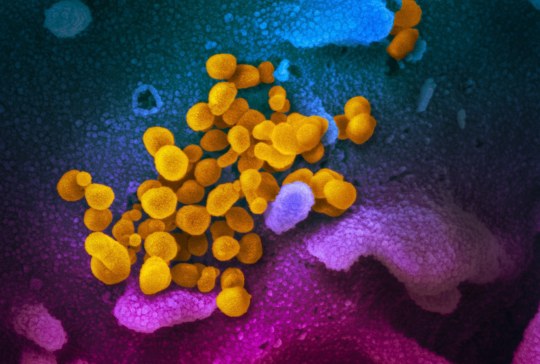
View On WordPress
#Americans#Blood#Coronavirus#Coronavirus Disease COVID-19#covid 19#effective#evolution#immunity#infection#infectious diseases#Mortality#omicron#protection#research#Respiratory#SARS#SARS-CoV-2#Severe Acute Respiratory#Severe Acute Respiratory Syndrome#syndrome#vaccine
0 notes
Text
Severe acute respiratory syndrome coronavirus 2 (SARS-CoV-2) infection is associated with short- and long-term neurological complications. The variety of symptoms makes it difficult to unravel molecular mechanisms underlying neurological sequalae after coronavirus disease 2019 (COVID-19). Here we show that SARS-CoV-2 triggers the up-regulation of synaptic components and perturbs local electrical field potential.
10 notes
·
View notes